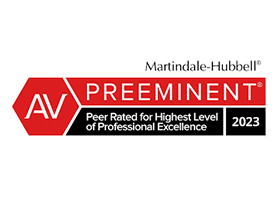Maryland DUI Law
Maryland DUI Law (Drunk Driving)
It is not against the law in Maryland to drink and drive. Repeat. It is not against the law in Maryland to drink and drive! It is only against the law to drink to the extent that the driver is either under the influence or impaired. Maryland law recognizes the following drunk driving and drugged driving offenses:
- Driving or attempting to drive while under the influence of alcohol.
- Driving or attempting to drive while under the influence of alcohol per se.
- Driving or attempting to drive while under the influence of alcohol while transporting a minor.
- Driving or attempting to drive while under the influence of alcohol per se while transporting a minor.
- Driving or attempting to drive while impaired by alcohol.
- Driving or attempting to drive while impaired by alcohol while transporting a minor.
- Driving or attempting to drive while so far impaired by any drug, any combination of drugs, or a combination of one or more drugs and alcohol that the driver cannot drive a vehicle safely.
- Driving or attempting to drive while so far impaired by any drug, any combination of drugs, or a combination of one or more drugs and alcohol that the driver cannot drive a vehicle safely while transporting a minor.
- Driving or attempting to drive while impaired by a controlled dangerous substance, if the driver is not entitled to use the controlled dangerous substance under Maryland law.
- Driving or attempting to drive while impaired by a controlled dangerous substance, if the driver is not entitled to use the controlled dangerous substance under Maryland law while transporting a minor.
To schedule an appointment, contact us online or call us at 410-740-0101. Put the skill and experience of a former prosecutor to work for you. We accept Visa, MasterCard, Discover and American Express.
What Constitutes Evidence of Drunk (or Drugged) Driving?
The evaluation of a drunk or drugged driving case can be broken down into sequential categories.
1. The Driving Factor
The first factor focuses on what led the arresting police officer to confront the driver, i.e. what was it that attracted the arresting police officer to the driver. Was the driver weaving? Speeding? Involved in an accident? Driving apparently normally, but with a tag light out? Weaving or involvement in an accident constitutes a greater indicia that the driver may have been affected by alcohol and/or drugs. Equipment malfunctions (e.g. tag lights out, registration sticker missing, etc.) have no direct connection with impaired driving. Speeding depends upon the speed and the circumstances. Thousands of drivers are stopped and ticketed everyday for speeding, and very few of them had consumed alcohol or drugs. An excessive speed, e.g. 30 miles per hour over the posted limit, may be more relevant in concluding that the judgment of the driver was impaired.
2. The Driver’s Appearance
A police officer is trained to observe a driver’s appearance after the motor vehicle is stopped. This includes observations of physical characteristics that may be consistent with the consumption of alcohol and/or drugs. For example, the arresting officer typically is looking for blood-shot eyes, a flushed face, slurred speech, etc. In addition, the arresting officer is trained to observe whether or not there is an odor of alcohol emanating from the driver or from the vehicle. The police officer will be observing whether the driver has any difficulty in locating or producing a driver’s license or vehicle registration. If the driver is asked to step out of the vehicle, the officer will be watching for evidence of lack of coordination or balance, such as leaning on the driver’s door for support, stumbling, etc. Finally, the police officer will observe whether the driver’s clothing is orderly or disarranged.
3. The Driver’s Statements
Typically, once the police officer detects an odor of alcohol, the officer will ask the driver whether or not the driver has been drinking. An admission by the driver that the driver consumed a couple of drinks (the proverbial “couple of beers”) in and of itself is not overriding or damaging, depending upon the other evidence in the case. However, if the driver admits to consuming a substantial quantity of alcohol, or drugs, then this is damaging evidence.
4. Field Sobriety Tests
Police departments in Maryland generally administer the same battery of field sobriety tests (FST). These field sobriety tests were developed and tested by the National Highway Traffic Safety Administration. There are three standard field sobriety tests usually administered: (1) horizontal gaze nystagmus test, (2) walk-and-turn test, and (3) one-leg stand. Police officers routinely receive training to administer the FST, and are certified.
The horizontal gaze nystagmus test involves observations of the driver’s eyes under a controlled situation. Nystagmus is an involuntary jerky movement of the eyes. The police officer is required to ask preliminary questions to ensure there is no other condition that might form the basis for nystagmus. The police officer will ask the driver to follow an object, such as a pen light or the officer’s finger, while holding the head stationary. The officer will move the object out to a 45 degree angle. The police officer is trained to observe three factors in each eye: (1) lack of smooth pursuit, (2) onset of nystagmus prior to 45 degrees, and (3) distinct nystagmus at the maximum deviation.
The horizontal gaze nystagmus test must be administered by a police officer who has received proper training and is certified to administer the test. The horizontal gaze nystagmus test properly is used only to determine whether there is evidence of alcohol consumption, but not the level of alcohol (e.g. impairment, intoxication, etc.).
The second standardized field sobriety test is the walk-and-turn test. The driver is instructed to stand in a heel-to-toe position while receiving instructions on how to perform the test. The test is performed by walking in a heel-to-toe fashion for nine steps, performing a designated turn, and returning in a heel-to-toe fashion for a second nine steps.
The police officer is trained to observe the following during performance of the walk-and-turn test:
- Inability to stand in the heel-to-toe position during the instructions.
- Starting the test before being instructed to do so.
- Stopping while walking.
- Failing to touch heel-to-toe.
- Stepping off the line.
- Using arms for balance.
- Performing the turn improperly.
- Taking an incorrect number of steps.
The final field sobriety test is the one-leg stand test. The driver is instructed to choose either leg and raise it six inches off the ground, counting rapidly from 1,001 to 1,030. The police officer is trained to observe the following factors:
- Swaying.
- Using arms for balance.
- Hopping.
- Putting foot down before reaching 1,030.
To schedule an appointment, contact us online or call us at 410-740-0101. Put the skill and experience of a former prosecutor to work for you. We accept Visa, MasterCard, Discover and American Express.
5. Preliminary Breath Test
Under Maryland law, police officers are permitted, but not required, to offer a driver a preliminary breath test (PBT), which usually is offered at the scene. This test is separate and distinct from the second, evidentiary breath or blood test. A driver is not required to take a preliminary breath test, and there is no penalty for refusing it. The purpose of the test is to serve as a guide for the police officer in assessing whether there is probable cause to arrest for drunk driving.
Under the law, a police officer is not supposed to inform the driver of the result of the PBT so that it does not unduly influence the driver’s decision whether or not to take the second, evidentiary test. If the PBT instrument is calibrated properly, it is only accurate to a 0.02 +/-. The result of a PBT is not admissible by the prosecution at trial. However, the accused is permitted to introduce the result of the PBT if it is favorable.
6. Evidence on Person or in Vehicle
A police officer is legally permitted to search an arrested driver, and to search the driver’s vehicle, incident to the arrest. No search warrant is required. The presence or absence of alcoholic beverage containers, drugs, drug paraphernalia, etc. is another relevant and important factor in a drunk or drugged driving case.
7. Conduct After Arrest
A driver’s conduct and behavior at the time of the arrest, and after the arrest, is important evidence. This includes whether or not the driver needed assistance to get into or out of the police car, or to walk into the police station; whether the driver was cooperative or uncooperative; whether the driver’s statements were appropriate to the circumstances; whether the driver was polite, or used threats or obscenities; whether the driver urinated or otherwise soiled themselves; and whether the driver’s overall appearance was neat and orderly, or disheveled.
In most cases, the arresting police officer fails to note anything in the police report regarding the conduct of the driver after arrest. A skilled drunk driving lawyer can take advantage of this omission and cross-examine the police officer to elicit the fact that the driver’s behavior and conduct was appropriate, or anything to the contrary would have been mentioned in the police report.
8. Alcohol Test Refusal or Test Result
If the alcohol test was refused, then there will be no scientific evidence of the amount of alcohol or drugs consumed. This substantially weakens the prosecution’s case, and is the reason that administrative sanctions are greater for test refusal. The disparity in sanctions is an attempt to induce, if not coerce, drivers to take alcohol and blood tests.
If the driver consented or agreed to a breath test or blood test, and the result was 0.00 to 0.05, Maryland’s drunk driving law states that the driver is presumed not to be under the influence of alcohol and not driving while impaired by alcohol. If the result of the breath test or blood test is 0.06, then Maryland’s drunk driving law states that this result does not give rise to any presumption that the driver was or was not under the influence of alcohol or driving while impaired by alcohol. This test result may be considered with “other competent evidence” (e.g. results of field sobriety tests, etc.) in determining whether the driver was or was not driving while under the influence of alcohol or driving while impaired by alcohol. If the result of the breath test or blood test was 0.07, Maryland’s drunk driving law states that this result is “prima facie evidence” that the driver was driving while impaired by alcohol. If the result of the breath test or blood test was 0.08 or more, Maryland’s drunk driving law states that the driver shall be considered under the influence of alcohol “per se.”
Some driver’s licenses contain an alcohol restriction. All licensees under the age of 21 are required to have an alcohol restriction by law. Other drivers may have alcohol restrictions imposed by courts or the Motor Vehicle Administration Medical Advisory Board. In either case, if the result of a breath test or blood test is 0.02 or more, it is prima facie evidence that the person was driving with alcohol in the person’s blood, and therefore in violation of the alcohol restriction. The alcohol restriction may be violated even if the result of the alcohol test is not otherwise in violation of the law, i.e. the alcohol test result is not sufficient to show that the driver was driving under the influence of alcohol, or driving while impaired by alcohol.
A summary of alcohol test results are as follows:
- Test result of 0.00 – 0.05: It is presumed that the driver was not under the influence of alcohol or impaired by alcohol.
- Test result of 0.02 or more: This is prima facie evidence that the driver was driving with alcohol in the person’s blood. This typically is relevant in cases involving allegations that the driver violated an alcohol restriction on the driver’s license. Note: If the result is between 0.02 and 0.05, the driver may be in violation of an alcohol restriction, but still presumed to be not under the influence of alcohol or impaired by alcohol.
- Test result of 0.06: This result may not give rise to any presumption that the driver was or was not under the influence of alcohol or impaired by alcohol, but may be considered with other competent evidence in determining whether the driver was or was not under the influence of alcohol or impaired by alcohol.
- Test result of 0.07: This is “prima facie” evidence that the driver was impaired by alcohol.
- Test result of 0.08 or more: This is considered under the influence of alcohol per se.
Jonathan Scott Smith is a top rated former criminal prosecutor, with over 30 years of courtroom experience. He has handled thousands of drunk driving cases. You can see what many satisfied clients have to say about the job he did for them. In addition, you can check the results in real cases he has handled.
Mr. Smith’s extensive trial experience — and track record of successful results — has earned him the recognition of his peers and clients:
- Maryland Super Lawyer.
- “10.0 Superb” as a litigation attorney by AVVO.
- “AV-Preeminent™*” Peer Rating by Martindale-Hubbell Law Directory.
- “Client’s Choice Award” by AVVO, based on average client reviews of 5 stars — the highest client review possible.
- 2012 Top Rated Lawyer by The American Lawyer magazine and Martindale-Hubbell.
These are the highest ratings possible for legal skill, ethical practice, a lawyer’s years in practice, disciplinary history, professional achievements and industry recognition.
Contact Our Office
“I am writing to thank you for all you have done for me and my family regarding my situation. When it first happened I was scared and didn’t know the legal system and what the effect would be on me and my family. But, when I first met with you I found you confident and experienced with other people who were in similar situations and I felt much better. … I was very happy with the outcome of the trial and that was all because of you.”
Ryan S. – Glenelg, MD
43-year old salesman stopped for DUI, arrested, and submitted to breath test with result of 0.18. Client refused plea bargain offer. All charges dismissed.
To schedule an appointment, contact us online or call us at 410-740-0101. Put the skill and experience of a former prosecutor to work for you. We accept Visa, MasterCard, Discover and American Express.
Attorney Jonathan Scott Smith represents clients in criminal defense matters, DUI / DWI, MVA Hearings, traffic offenses, domestic violence and child abuse charges throughout Maryland, including the cities of Columbia, Clarksville, Sykesville, Fulton, Elkridge, Frederick, Mt. Airy, Ellicott City, Laurel, Westminster, and Baltimore. Lawyer Smith also provides experienced legal representation for clients in Baltimore County, Anne Arundel County, Carroll County, Prince Georges (Prince George) County, Howard County and Montgomery County, MD.
Tags: drunk driving defense lawyer, driving under the influence, drunk driving law, drunk driving lawyer, dui defense lawyer, jonathan scott smith, administrative license revocation, maryland drunk driving, drunk driving laws, sobriety checkpoint, road transport, alcoholic beverage, traffic collision, breath tests, drunk driving, impaired driving, maryland laws, howard county, attorney, alcoholism, driving, alcohol, drives, md, breathalyzer, maryland, law










